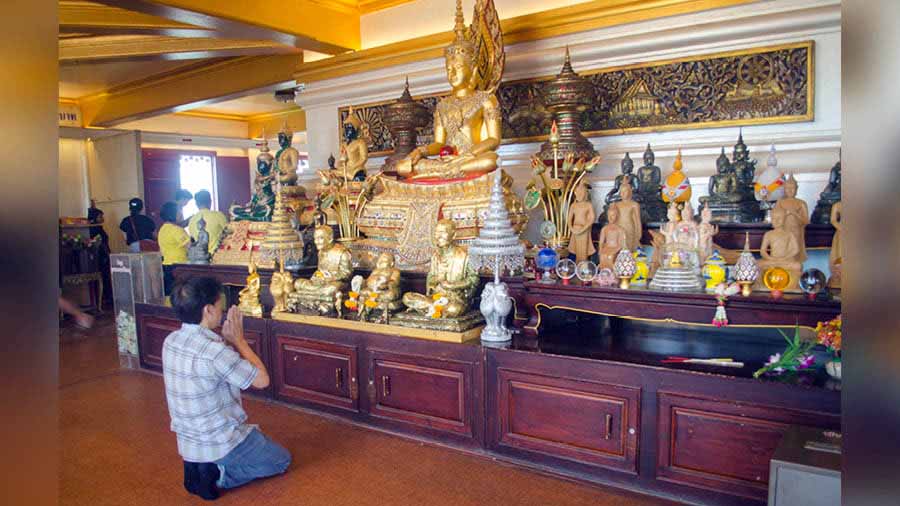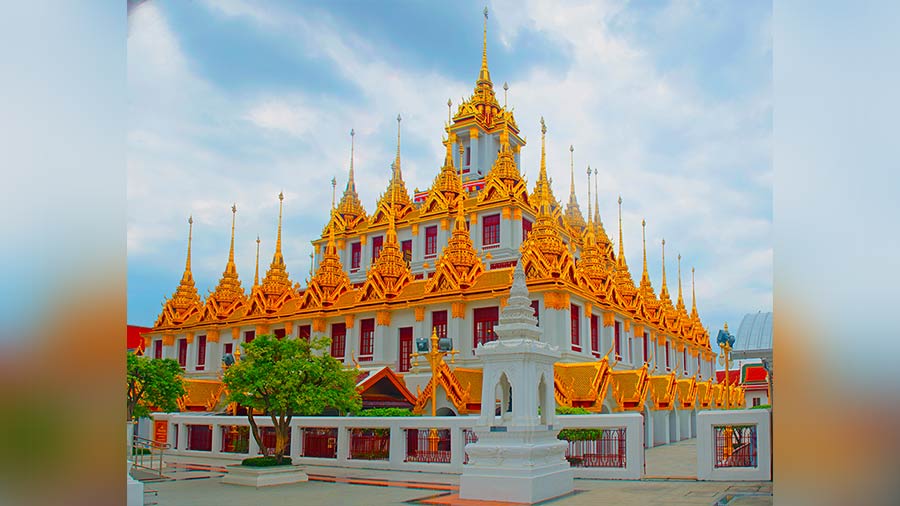In 1782, the Rattanakosin dynasty came into power and made Bangkok their capital. The city was surrounded by a high wall and a deep moat. During that time dead bodies were not cremated within the city as it was considered as an evil portent. Dead bodies were cremated outside the city walls and moats in the north-eastern corner of the city. The bodies were cremated in an Ayutthaya era (1569 – 1767) temple complex known as Wat Saket. Although Bangkok served as the capital of Siam (old name of Thailand) it was still a marshy land and epidemics of plague and cholera were quite common. During the epidemic, the crematorium was not able to cremate the bodies in time and dead bodies were left under the open sky. This attracted vultures that flocked in large numbers to devour on the bodies. The vultures dominated the temple for over six decades, ending in the 1880s, but the legends of the vultures continue to this day.

The towering golden chedi (stupa) of Golden Mount
As time passed, epidemics were less frequent and the number of deaths were under control. The vultures vanished and plans were made to give Wat Saket a new lease of life. King Rama III (Reign 1824 – 51) built an artificial hill at the spot and started construction of a chedi (stupa) atop it. The entire hill along with the chedi collapsed during the construction process, as the soil was too soft to support it.
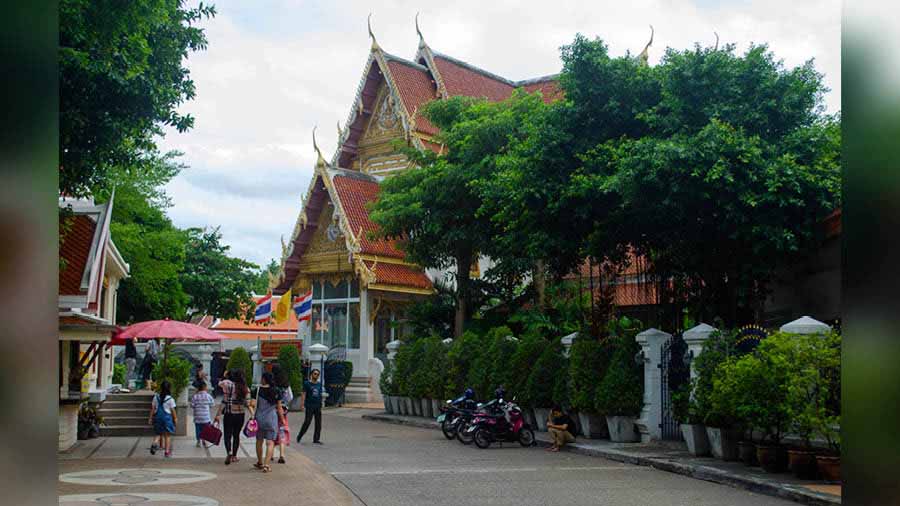
A shrine at the base of the Golden Mount
Later his son, King Rama IV (Reign 1851 – 68), came up with a more ambitious plan. He used 1,000 teak logs to secure the mound and started construction on a more modest chedi that still exists today. Much later, a relic of Buddha was placed inside the chedi. The artificial hill supporting the golden chedi came to be known as the Golden Mount and still dominates the skyscraper infested skyline of Bangkok.

Statues depict the story of vultures at Wat Saket
Today, Wat Saket and the Golden Mount are major tourist attractions in Bangkok and attract a large number of Buddhist pilgrims and tourists, both domestic and international. There are no vultures around but a climb to the top does offer a bird’s eye view of Bangkok. It is a big temple complex with a number of scattered shrines but the star attraction is the mount topped with the golden chedi.
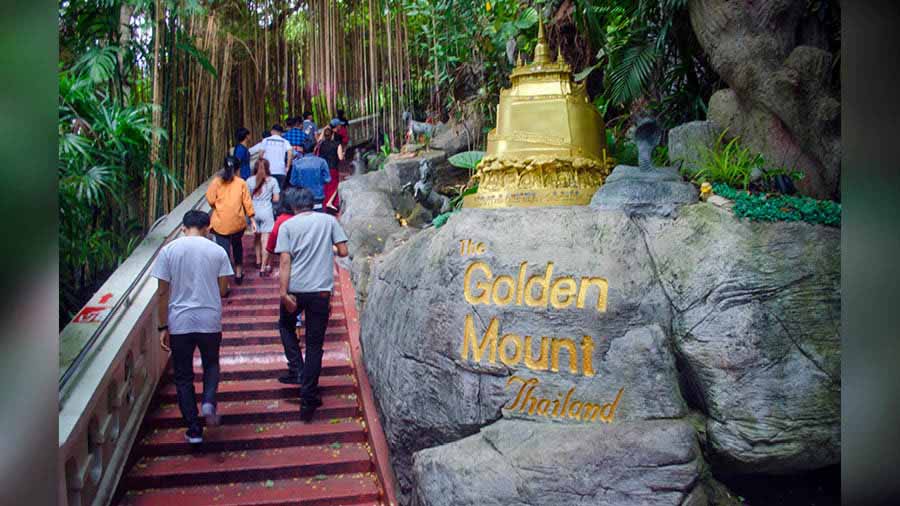
A spiral staircase leads to the top of Golden Mount past landscaped gardens
A spiral staircase of 318 steps leads to the top of the mount. The entire route is decorated with fountains and statues, depicting not only the different aspects of Buddhism but also the history of the temple. There are statues of vultures with a write-up narrating the history. There are cafes on the way for tourists to rehydrate themselves.
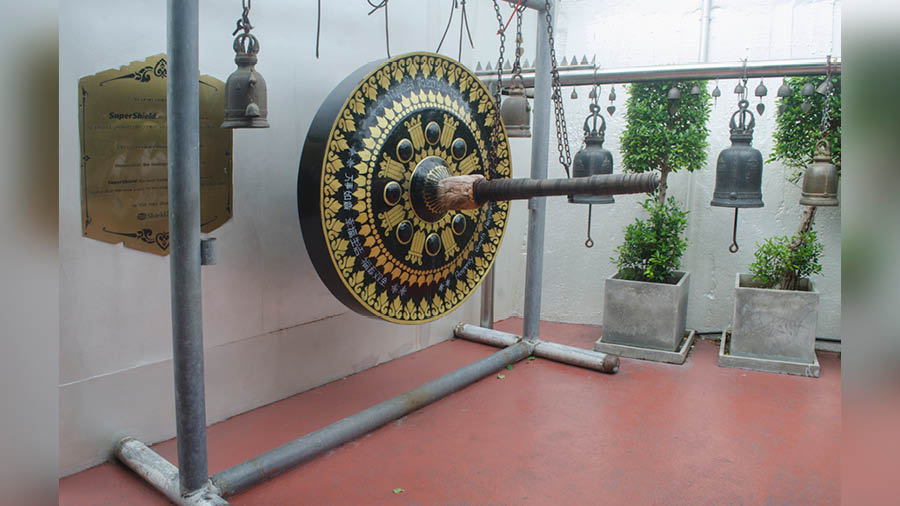
A giant bell, which is struck with a battering ram
As one climbs higher, the panoramic views of Bangkok unfolds and finally it leads to a small shrine atop the mound. The golden chedi is located on the terrace of the Wat Saket. Buddhist devotees come here to pray and offer flower garlands, lotus buds, incense and money, but the tourists are more interested in the amazing view of Bangkok.
A guide to Wat Saket
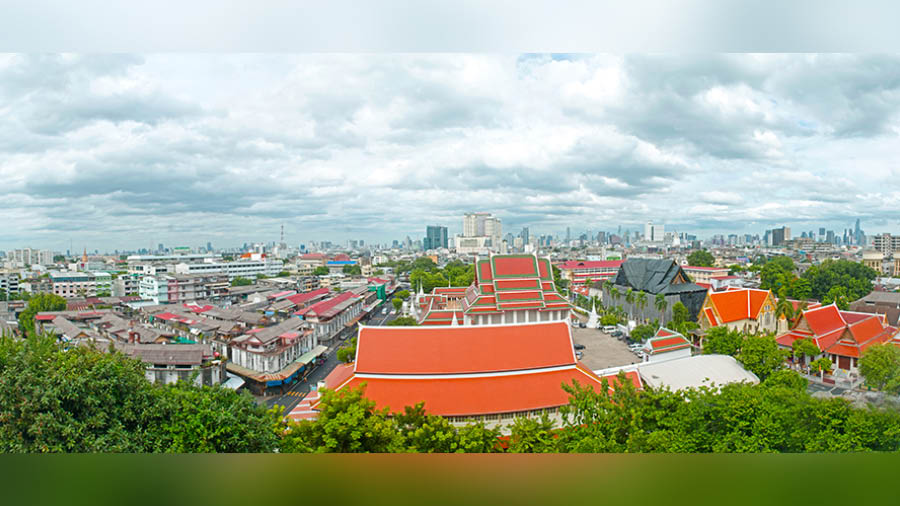
The panoramic view of Bangkok from atop Golden Mount
- The temple is open 7am to 7pm
- There is an entry fee of 100 Baht. Photography is allowed and is free
- It is a functional Buddhist temple, so there is a dress code. Men must wear long pants and short-sleeved or long-sleeved shirts. Women must wear skirts or pants extending at least to the knee, and also should not wear a top that reveals bare shoulders.


